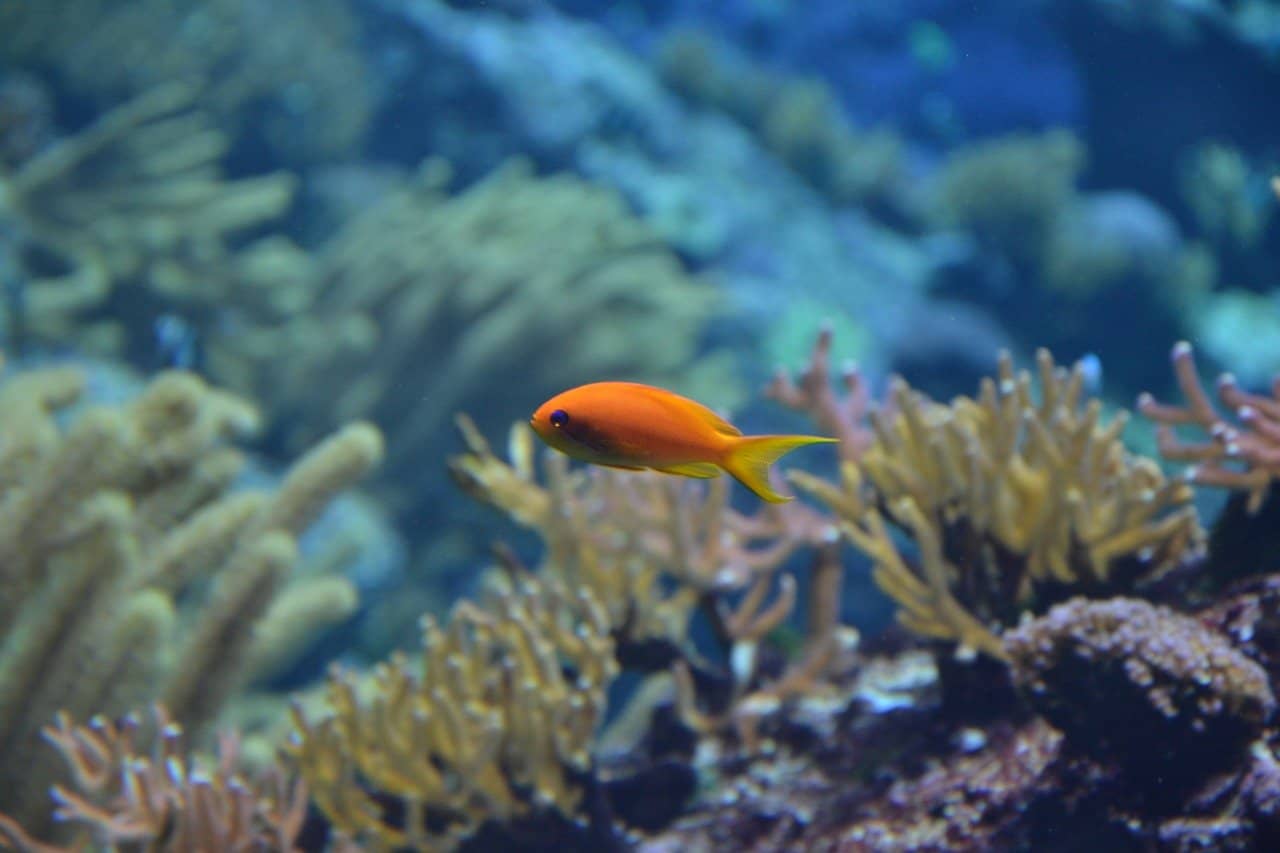
It depends on whether the aquarium substratum is well matched to the aquarium whether the aquarium plants will be provided with the right conditions for their growth. Which substrate type should you decide on?
An outsider that has little to do with aquarium fish often does not pay attention to the bottom material in the aquarium. Why bother with such details when you can admire fascinating fish and plants that fill the aquarium. Exactly – the plants – it is primarily with them in mind that you must take care of a suitable aquarium bottom. Without it, the plants will not want to grow. A properly selected substrate is to plants what a solid foundation is to a building – it gives them somewhere to root, and thanks to it they gain stability. Many people may be surprised to learn that the substrate also protects against the uncontrolled multiplication of harmful microorganisms. Next time you observe the life inside the aquarium from behind a glass pane, be sure to also look at the bottom material used.
Some people start keeping fish in glass aquariums in early childhood. For others, the hobby becomes interesting only as an adult. No matter how old you are, setting up a professional aquarium with correctly sized substrate, a powerful filter and fish that are not each other’s natural enemies is no easy matter. Of course you can find a lot of information on the net about how to begin your aquarium hobby without disappointments and failures, but nothing can really replace advice of an experienced pet store employee.
Determine your needs and expectations, estimate the budget you’ll allocate for the investment (you have to be aware of the fact that aquarium purchase and its later setup is quite a big expense) and you’ll surely receive a handful of professional advice. The choice of the substrate for the aquarium should depend on the size of the tank and also on which fish will be kept in it. In the case of species that keep close to the bottom, it is worth ensuring that the substrate is not too harsh.
When browsing through the extensive resources of pet stores, one may come across information on three most popular types of substratums that prove themselves in aquaria of persons dealing with aquaristics both as hobbyists and more professional ones. How do they differ from each other?
Gravel – it is the most universal. It should appeal to both beginner aquarists and those who already have some experience in keeping fish at home. In gravel almost all plants are able to spread their root system efficiently, which contributes to their later proper growth. Gravel substrates include quartz gravel (the lightest), basalt gravel (the color opposite of quartz gravel – it is almost completely black) and river gravel (shimmering in different colors). As you can easily guess from the names themselves, most fish feel most comfortable around river gravel as it is the closest to natural conditions the species can live in the wild.
Sand – this is another of the available choices. It used to be underestimated and as soon as the plants stopped growing in the aquarium and started to rot, then the whole blame fell on the sandy substrate. Nowadays, aquarists use this solution more and more often – especially those keeping fish that like to hide in sandy hideaways.
Volcanic substrate – people that had their last contact with aquaristics a dozen or so years ago may not be familiar with such a solution at all. This product is relatively new on the market, although it systematically gains supporters. It is praised as an excellent natural filter. Many people also emphasize the visual aspect – the volcanic substrate has interesting colors.
Gravel is a kind of substrate that is readily used both by persons beginning their adventure with aquaristics and by advanced aquarium hobbyists. Gravel, especially fine grained gravel, ensures proper rooting of plants and creates good conditions for their growth. You will find various gravel types in aquarium stores. The most popular ones are:
Wondering what sand will be most suitable for your aquarium? For this type of tank, experienced aquarium enthusiasts primarily recommend quartz sand. Its light color makes the aquarium appear larger. Due to the fact that more than one material is often chosen for aquarium bottom lining, such sand is usually used as a single layer due to its fine grain size. In saltwater tanks, it is worth betting on aragonite sand called coral sand of light shade, which will be an excellent background for rock elements
This question spends sleepless nights for many people who are planning to set up their own aquarium. When calculating the required amount, you need to take into account both the tank dimensions – length and width, as well as the height of the substrate you want to obtain. We multiply these values and then divide by 1000 – then we get the result in liters. You have to remember that usually at the back of the aquarium you will need a bit more of the substrate. In case of any doubts, use the ready calculators for calculating the amount of substrate in an aquarium available on the Internet.
It may surprise you, but there are plants that do not need gravel for their growth in an aquarium. You may as well attach them to decorations in the tank, e.g. stones, roots etc. These include anubias, water moss or white-headed anemone, , that can also float freely on the water surface